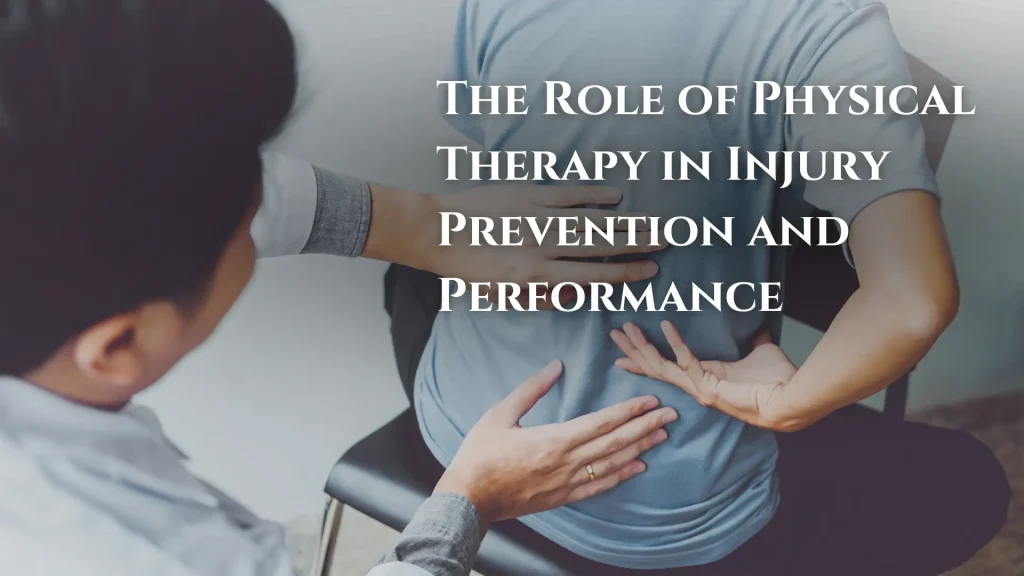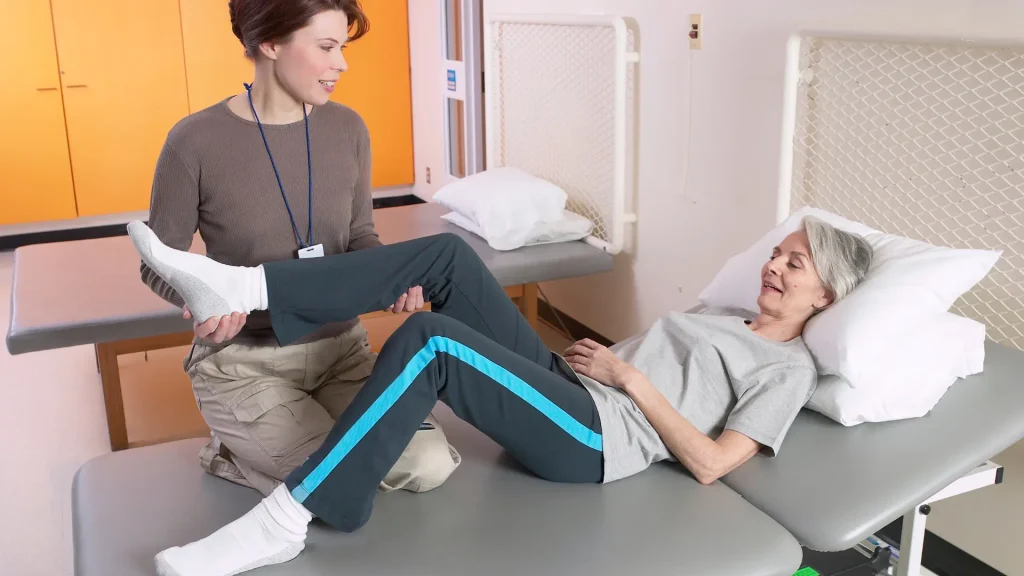 In today’s active world, doctors and medical professionals have started to value precautionary injury prevention just as much as post-facto injury treatment. While widely known as a method for the latter, physical therapy has also emerged as a powerful tool for the former. Let us show you how proper movement, techniques, targeted strengthening, and personalized prevention strategies can keep you performing at your best while minimizing injury risk. Often, the correct physical therapy answer to pain lies in addressing the root cause through thoughtful, individualized care that promotes long-term recovery and resilience.
In today’s active world, doctors and medical professionals have started to value precautionary injury prevention just as much as post-facto injury treatment. While widely known as a method for the latter, physical therapy has also emerged as a powerful tool for the former. Let us show you how proper movement, techniques, targeted strengthening, and personalized prevention strategies can keep you performing at your best while minimizing injury risk. Often, the correct physical therapy answer to pain lies in addressing the root cause through thoughtful, individualized care that promotes long-term recovery and resilience.
How Physical Therapy Helps Prevent Injuries
Physical therapy evaluates your body’s mechanics, strength, flexibility, and overall movement quality to help detect and address problematic movement patterns that could lead to injuries.
Physical therapy helps prevent many common injuries, including the following:
- Work-related injuries, including those in the construction, mining, and manufacturing industries
- Sports injuries, such as ACL tears, rotator cuff injuries, tennis elbow, and runner’s knee
- Age-related injuries, especially with fall-related accidents
- Repetitive strain injuries from workplace tasks, sports, or daily activities
Athletic Injury Prevention Through Physical Therapy
Physical therapy can help you and offer specific advantages beyond basic injury prevention for those pursuing athletic goals. For instance, the same principles that prevent injuries, such as optimizing movement patterns, can often improve athletic performance.
However, what that aid looks like can depend on the specific physical discipline, as the movement patterns and physical demands can vary by activity.
Basketball and ACL Injury Prevention
Basketball players face a high risk of anterior cruciate ligament (ACL) injuries due to the sport’s frequent jumping, cutting, and pivoting. Physical manual therapy prevention programs can help basketball players focus on their jump landing mechanics, deceleration technique, and proprioceptive awareness (the body’s spatial sense of position).
Soccer and Lower Extremity Injury Prevention
Despite basketball’s critical mass of ACL injuries, soccer has its own high rate of ligament-related issues due to the sport’s rapid directional changes, player-to-player contact, and unpredictable nature. Physical therapists can help soccer players via lower extremity alignment training for kicking motions, ankle proprioception exercises to prevent sprains, eccentric hamstring strengthening to avoid strains, and targeted hip and groin mobility work.
Football and Collision-Related Injury Prevention
Football had the largest number of ACL injuries and the highest competition-related ACL injury rate among the studied collegiate sports. Physical therapists can help football players focus on neck strengthening to reduce concussion risk, multi-directional stability training, contact preparation exercises, proper techniques, tackling mechanics, and recovery strategies between high-intensity training sessions.
Workplace Injury Prevention Through Physical Therapy
Physical therapists have used their skills to reduce the workforce injury rate in the field and the workplace. In one recent year, New Jersey saw 87,300 nonfatal workplace injuries and illnesses, with an incidence rate of 2.6 cases per 100 full-time equivalent workers, a decrease from 2017, when there were 92,200 cases.
Physical therapists can help workplaces in the following ways:
- Conducting ergonomic workplace assessments
- Interviewing workers for clinical issues
- Conducting social problem solving
- Mediating health concerns in the workplace
- Bringing their overall knowledge of workplace musculoskeletal and medical conditions
Building a Comprehensive Injury Prevention Program
A successful physical program will include several key components. First, your physical therapist should guide you through a movement screening, using specialized assessment tools to identify potential issues before they become more serious. This proactive approach is essential because, without proper evaluation, physical therapy can become painful if underlying movement problems are not addressed early on.
They will then recommend exercises to strengthen the primary and supporting muscles that help stabilize your muscles and joints, and give you flexibility and mobility training tips to increase your range of motion.
Your licensed physical therapist will then help your body’s balance, posture, and proprioception to create a solid foundation for safe movement. Finally, they will guide you through performing everyday movements with optimal mechanics to reduce your risk of injury during daily physical activities.
Maximizing Your Injury Prevention Success with Physical Therapy
 Whether you need help reaching your fitness goals, keeping yourself healthy in the workplace, or taking care of your overall physical state, a good physical therapist can play a crucial role in improving your movement patterns, managing your pain, and building a preventative, rehabilitative, and treatment plan for you. Choosing the right provider can make all the difference.
Whether you need help reaching your fitness goals, keeping yourself healthy in the workplace, or taking care of your overall physical state, a good physical therapist can play a crucial role in improving your movement patterns, managing your pain, and building a preventative, rehabilitative, and treatment plan for you. Choosing the right provider can make all the difference.
Our physical therapists at AllCare Health & Pain take a holistic approach to ensure we understand your specific needs while leveraging the relevant advancements in the medical field. We develop personalized treatment plans for every patient, as we know your body’s needs are unique to you.
Take the Next Step Toward Injury-Free Performance at AllCare Health & Pain
Invest in preventive physical therapy in New Jersey with AllCare Health & Pain by calling us at 201-386-9800 or filling out our contact form. Our Jersey City location offers comprehensive injury prevention through physical therapy, and our team of experienced professionals is dedicated to helping you perform stronger and live without pain-related limitations.
Related Post
Understanding the Differences Between Chiropractic Care and Physical Therapy

